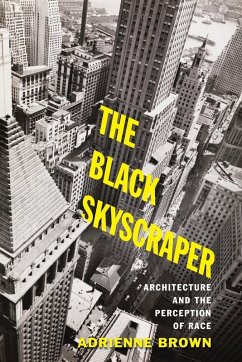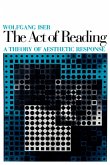With the development of the first skyscrapers in the 1880s, urban built environments could expand vertically as well as horizontally. Tall buildings emerged in growing cities to house and manage the large and racially diverse populations of migrants and immigrants flocking to their centers following Reconstruction. Beginning with Chicago's early 10-story towers and concluding with the 1931 erection of the 102-story Empire State Building, Adrienne Brown's The Black Skyscraper provides a detailed account of how scale and proximity shape our understanding of race. Over the next half-century, as city skylines grew, American writers imagined the new urban backdrop as an obstacle to racial differentiation. Examining works produced by writers, painters, architects, and laborers who grappled with the early skyscraper's outsized and disorienting dimensions, Brown explores this architecture's effects on how race was seen, read, and sensed at the turn of the twentieth century. In lesser-known works of apocalyptic science fiction, light romance, and Jazz Age melodrama, as well as in more canonical works by W. E. B. Du Bois, F. Scott Fitzgerald, Aaron Douglas, and Nella Larsen, the skyscraper mediates the process of seeing and being seen as a racialized subject. From its distancing apex--reducing bodies to specks--to the shadowy mega-blocks it formed at street level, the skyscraper called attention, Brown argues, to the malleable nature of perception. A highly interdisciplinary work, The Black Skyscraper reclaims the influence of race on modern architectural design as well as the less-well-understood effects these designs had on the experience and perception of race. "A lucid, engaging look at how race was read in and through the skyscraper in early twentieth-century literature, The Black Skyscraper contributes in a substantial way to the growing body of literature that examines the connections between racial identity and the built environment."--Dianne S. Harris, University of Utah, author of Little White Houses: How the Postwar Home Constructed Race in America "Especially impressive is Brown's careful attention to the aesthetic questions, including a clear account of how the skyscraper entered a collective imagination and contributed to a changing sensorium. In showing how the many literary and visual works she has assembled for this study--nonfiction and fiction, documentary and imaginative--at once register and shape that collective imagination, Brown offers evidence of the importance of humanistic and artistic inquiry that stands to contribute significantly to critical debates on race and the built environment."--Priscilla Wald, Duke University, author of Contagious: Cultures, Carriers, and the Outbreak Narrative "This exciting study breaks important new ground in the field of race and architecture. Showing incisively not only how ideas about race shaped the emergence of the early skyscraper but also how the skyscraper in turn shaped the perception of race itself, Brown's book offers a fresh understanding of the often profound impact of the built environment on seeing, feeling, and performing racial identity. A must-read for anyone interested in the intersections between buildings, bodies, and books at the turn of the twentieth century."--William Gleason, Princeton University, author of Sites Unseen: Architecture, Race, and American Literature "The Black Skyscraper is Adrienne Brown's magisterial work on the effects of race and racial perception emergent with the rise of the vertiginous symbols of industrial capitalism and modernity that sprouted in America's metropolitan centers in the first half of the twentieth century. Her adept and unparalleled analysis of literature, dime-store novels, architecture, and urbanism offers a bold interdisciplinary model for rethinking the aesthetic and visual coding of racial difference within the built environment."--Mabel Wilson, Columbia University, author of Begin with the Past: Building the National Museum of African American History and Culture








